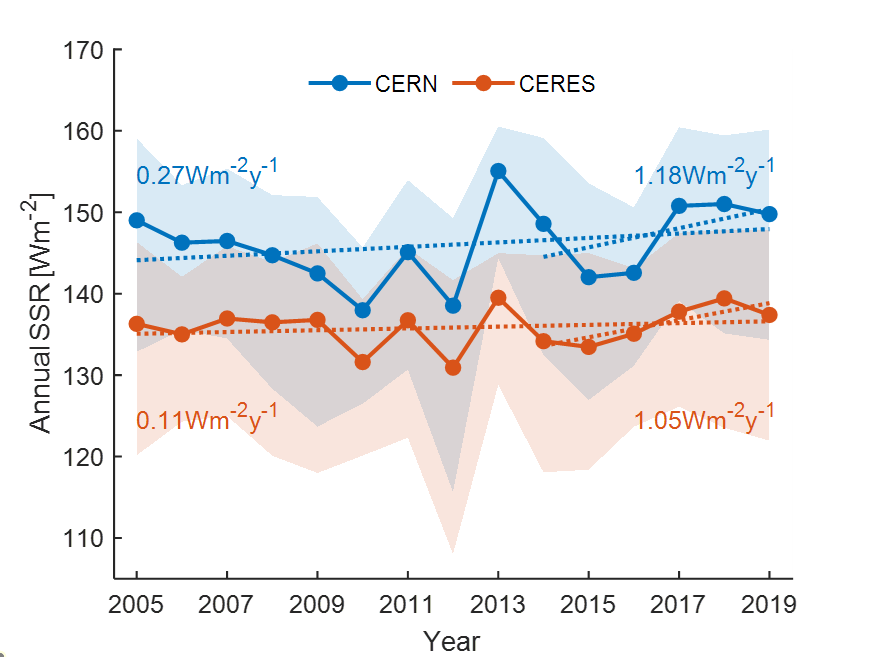Since 2013, China has implemented the strictest ever air pollution control policies, which resulted in substantial reductions in aerosol concentrations. However, extreme and persistent haze events frequently occur during wintertime China. In winter haze event, aerosol-related reductions of surface solar radiation (SSR) have comparable impacts on clouds over eastern provinces.
Recently, the Institute of Atmospheric Physics (IAP) of the Chinese Academy of Sciences, through the cooperation with the Pacific Northwest National Laboratory of the United States (PNNL), University of California, Los Angeles, and other research agencies, conducted the study using observations and model simulations, aiming to further understand the underlying chemical mechanisms driving the winter haze events and how the recent stringent control measures affect the SSR.
"Our observational analysis unexpectedly shows a much weaker decrease in particle matters, known as PM, during winter compared with other seasons. State‐of‐the‐art model simulations suggest that the weakened wintertime PM decline is mainly attributed to the increase in wintertime atmospheric oxidation capacity and the enhanced conversion of nitric acid to nitrate by ammonia, which are induced by anthropogenic emission reductions." said Dr. Bin ZHAO from PNNL, one of the corresponding authors of the studies published in Geophysical Research Letters.
The researchers also find a dramatic increasing trend in SSR during 2014-2019 over the eastern and central China, which is among the world’s fastest brightening in the last few decades. "We use a novel method to elucidate the relative contributions of the aerosol and cloud radiative effects to the SSR trends. The results show that the strongly declining aerosol radiative effect due to the strict control policies plays a dominant role in producing the upward SSR trends." Said Dr. SHI Hongrong from IAP, one of the authors of the studies.

Trends of annual mean SSR from 2005 to 2019, and trends of annual mean SSR during 2014-2019 are also presented for comparison. (Image by SHI Hongrong)
According to their studies, previous pollution control policies did not effectively mitigate severe wintertime PM pollution due to these unfavored chemical processes. Stricter control policies targeting oxidants and wintertime emission sources are imperative to counteract the buffering chemical mechanisms over China.
"Our findings indicate that the air pollution control actions can lead to not only considerable environmental and health improvements, but also increases in solar photovoltaic energy production." said Dr. SHI. "This is potentially an important co-benefit of air pollution controls in China which deserves more attention in future decision making."
References:
Hongrong Shi, Jinqiang Zhang, Bin Zhao, Xiangao Xia, Bo Hu, Hongbin Chen, et al., 2020: Surface brightening in eastern and central China since the implementation of the Clean Air Action in 2013: causes and implications. Geophys. Res. Lett., e2020GL091105, doi.org/10.1029/2020GL091105.
https://agupubs.onlinelibrary.wiley.com/doi/10.1029/2020GL091105
Danny M Leung, Hongrong Shi, Bin Zhao, Jing Wang, Elizabeth M Ding, Yu Gu, et al., 2020: Wintertime particulate matter decrease buffered by unfavorable chemical processes despite emissions reductions in China. Geophys. Res. Lett., 47(14) e2020GL087721, doi.org/10.1029/2020GL087721. https://agupubs.onlinelibrary.wiley.com/doi/10.1029/2020GL087721
